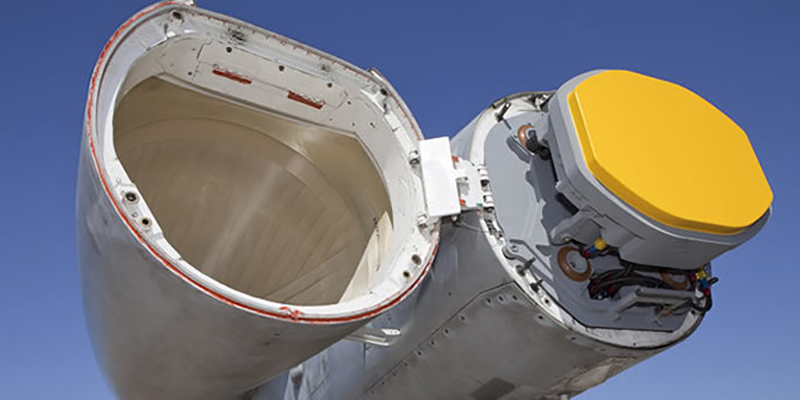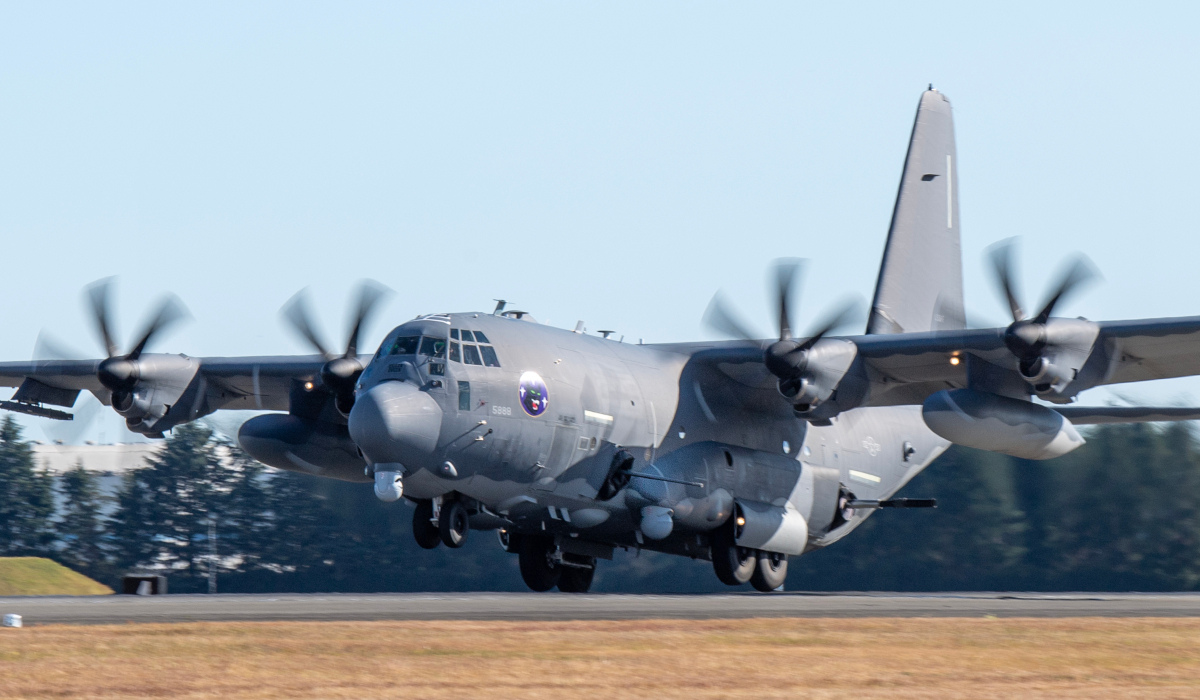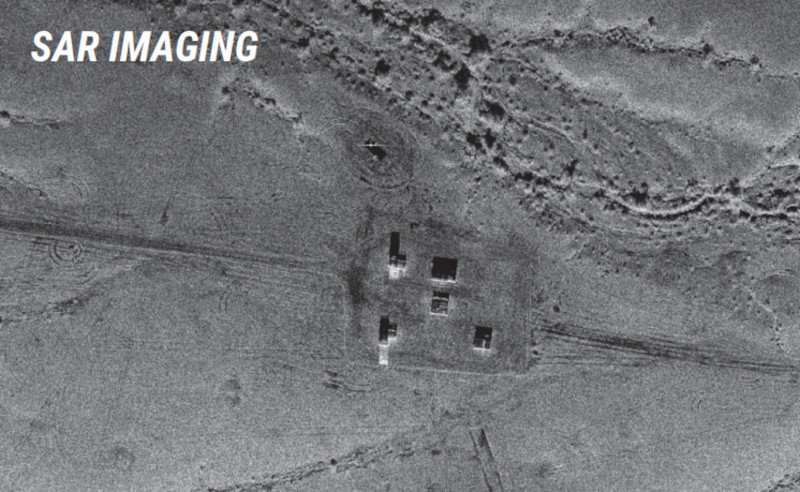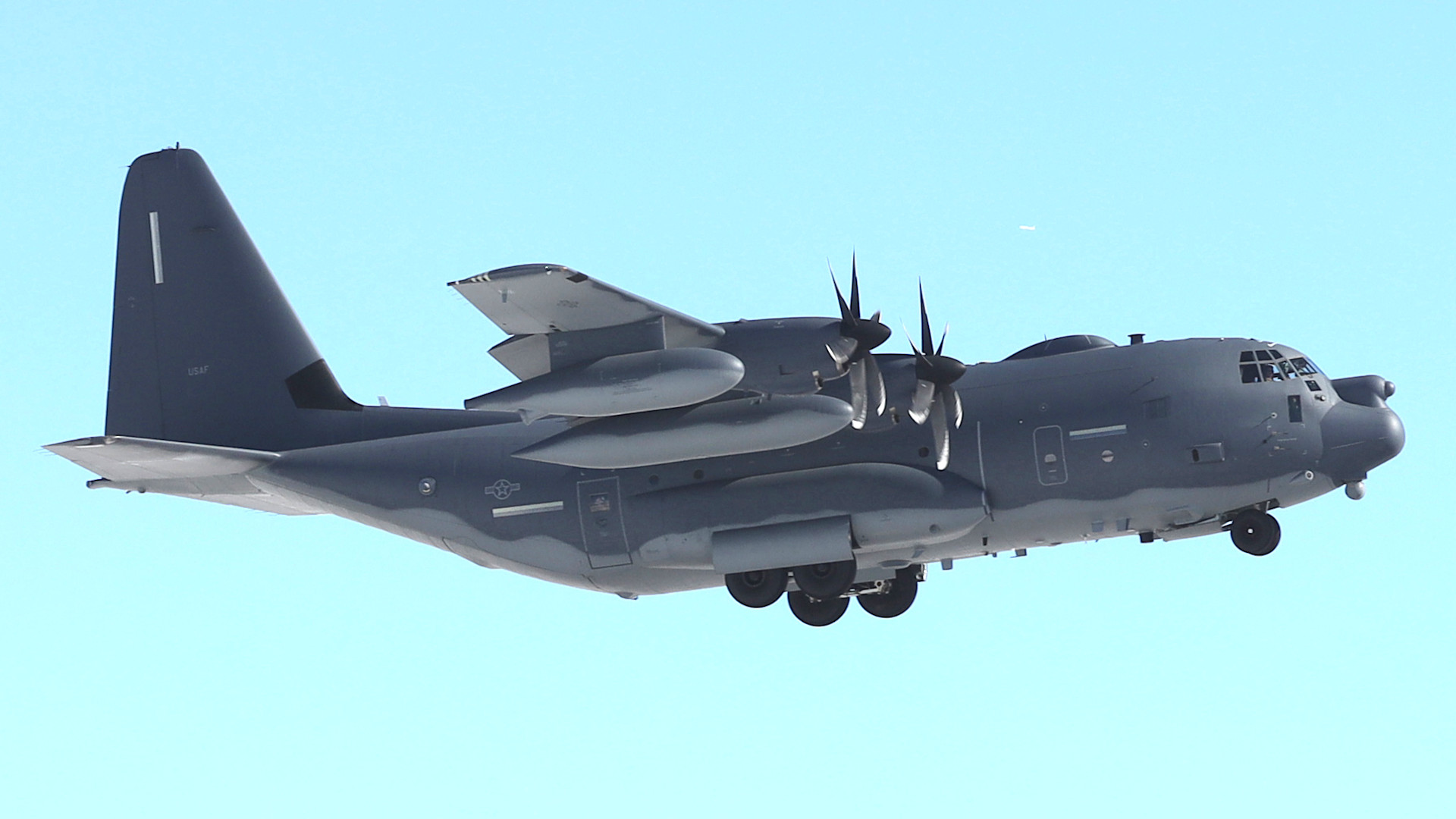U.S. Special Operations Command (SOCOM) is testing the market to see if anyone can provide “rapid fielding” of AESA (active electronically scanned array) radars to replace the existing radars on AC-130J Ghostrider gunships and MC-130J Commando II special operations transport/tanker aircraft. Such a move would replace the AN/APN-241 mechanically scanned weather and navigation radars on these aircraft with an AESA radar set, bringing vastly different capabilities to the platform.
SOCOM placed a request for information (RFI) on the federal SAM.com contracting website Thursday. That was the first apparent formal step taken by the command to pursue a capability it has sought, at least to some degree, since at least 2015. That’s when SOCOM revealed that it had been testing the AN/ASQ-236 Dragon’s Eye radar pod on its gunships. SOCOM later decided that would not work.

Then-Air Force Special Operations Command (AFSOC) commander Lt. Gen. James Slife brought up the concept again at a September 2022 Air and Space Forces Association conference. Slife is now a general, serving as Air Force Vice Chief of Staff.
“I think we’re in the terminal stages of concluding an agreement with an industry partner that will allow us to put an… AESA radar on a C-130, which provides a whole host of capabilities that we haven’t seen up to this point,” Slife told reporters during a media roundtable at the time.

An AESA radar “on a C-130 opens up a host of possibilities for everything from airborne electronic attack and airborne cyber effects and things of that nature that up to now have not been part of our portfolio,” he added.
In May 2023, the U.S. Special Operations Command (SOCOM) Program Executive Office for Fixed Wing aircraft (PEO-FW) announced plans to test a Ghostrider gunship equipped with AESA radar.

It is unclear what happened to the agreement Slife mentioned two years ago or the Ghostrider test, but AFSOC is apparently just now beginning to formally engage industry on a wide scale about its intentions of adding the sensor system that would greatly boost the capabilities of both aircraft.
AESA radar systems offer major benefits over their mechanically scanned array counterparts. These include near instant scanning speed, being able to execute multiple modes at once, the range at which they can spot targets and their overall fidelity. They are also more resistant to jamming and are far more reliable, mainly because they lack their predecessors moving parts.
But for the AC-130, specifically, an AESA radar could allow it to do things it current cannot, which includes engaging targets in all weather and over great ranges without external support and tracking moving targets on the ground over broad areas. These two capabilities are enabled by synthetic aperture radar imaging and ground moving target indicator modes. You can read about what an AESA could bring to the AC-130J in far greater detail in our previous feature linked here.

One thing that is worth noting is that placing an AESA radar in an AC-130J’s nose, unless it was installed on a swashplate, would not allow it to scan directly to its left side, where the AC-130’s guns are installed. The radar could still help pick out fixed targets to hit with the guns, but directing the guns against moving targets via radar would not likely be possible without another side-mounted array. There are smaller modular solutions that exist for such an installation that could be tied into the larger forward-facing array.

The MC-130J could also benefit from these capabilities, for its own navigation and surveillance uses, but also to enable others in the battlespace.
AESA radars, as The War Zone has long pointed out, additionally have the secondary potential to carry out non-kinetic attacks using highly focused beams of electromagnetic energy to jam, disrupt, and even damage the electronics within aircraft, missiles, and other systems. As a result, the MC-130J and C-130J could be turned into electronic warfare platforms with relatively long-range capabilities.
That speaks to the kind of effects Slife said he would like to see the C-130 fleet carry out.
AESAs can also work as very high bandwidth, long-range communications nodes, which could also be useful in context of both the AC-130 and MC-130, which are already equipped with advanced communications systems. This capability could be leveraged for relay duties for other platforms and personnel within line-of-sight of the Hercules, especially if satellite communications are degraded or totally unavailable.
All of this speaks to making these aircraft more relevant to a high-end fight, especially one in the Pacific against China. Just an AESA alone would drastically increase the flexibility and potential roles for these aircraft after two decades of being tailored to counter-insurgency and counter-terror operations. Such enhancements could even be critical to their survival, not just on the battlefield, but when it comes to the Pentagon’s ever changing budgetary priorities.
In its market survey, AFSOC laid out a list of criteria of capabilities it is seeking in a future AESA system:
- Perform all weather functions and flight situational awareness of existing AN/APG-241 radar.
- Compatibility with existing radome (space and environmental)
- Open source interface and willingness to work with third-party integrators and software developers.
- Synthetic Aperture Radar maps and the ability to generate CAT 1 coordinates (less than six meters deviation from a target).
- Ground Moving Target Indicators.
As to what radars are available for such an application, Northrop Grumman’s AN/APG-83 Scalable Agile Beam Radar (SABR), a version of which is currently equipping USAF F-16C/Ds, would make sense, as would a radar base don Raytheon’s AN/APG-79, which equips F/A-18C/D, F/A-18E/F, EA-18G, and also soon the B-52J in enlarged form. The F-15E and F-15EX’s AN/APG-82 could be a very powerful option. These are just two prominent options, among others.

The RFI comes as AFSOC is already in the process of replacing the AN/APN-241 radars with Raytheon’s AN/APQ-187 Silent Knight terrain-following/terrain avoidance radars on the Commando IIs as well other special operations aviation assets including Air Force CV-22B tilt-rotors and Army MH-60M and MH-47G helicopters. The Air Force plans to upgrade the entire Commando II fleet to this new configuration in the coming years, giving the planes a degree of nap-of-the-earth flight capability in hostile environments that is essential for performing their special operations missions, but has been elusive since the Commando II’s introduction.

We don’t know AFSOC’s timeline for acquiring AESA radar for its C-130 fleet, which is not even mentioned in SOCOM’s Fiscal Year 2024 budget proposal. It is also unclear how or if this would affect the command’s plans to add the SKR to the MC-130Js. We’ve reached out to AFSOC with numerous questions about its efforts to add AESA to its C-130 fleet and will publish those answers when they come.
Contact the author: howard@thewarzone.com
